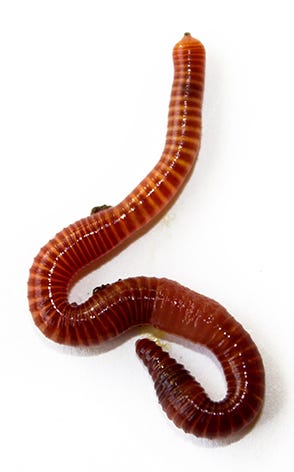Whatever You Required to Know Concerning Red Wigglers for Composting
Red wigglers, or Eisenia fetida, play an essential role in the realm of composting, changing organic waste into beneficial dirt changes. The process of setting up a worm container and keeping it can present difficulties.
What Are Red Wigglers?

(red wiggler worms near me)
Belonging To North America, red wigglers are surface-dwelling organisms that prefer wet, cozy environments abundant in disintegrating raw material. Their diet plan consists mainly of decaying plant material, food scraps, and various other natural particles, which they take in and break down efficiently. As they absorb this product, they create nutrient-rich castings that enhance dirt fertility.
Red wigglers are hermaphroditic, having both male and female reproductive body organs, and can reproduce swiftly under optimal conditions. Overall, red wigglers are important factors to the process of recycling natural waste right into useful compost.
Benefits of Making Use Of Red Wigglers
Making use of red wigglers in composting systems uses various advantages that enhance both the effectiveness of waste monitoring and the high quality of the resulting garden compost. These worms, medically called Eisenia fetida, are especially reliable at breaking down organic matter, transforming cooking area scraps and yard waste into nutrient-rich garden compost at an increased rate.
One of the main advantages of making use of red wigglers is their capacity to consume large quantities of organic product, usually refining their weight in food waste daily. This high consumption price results in much faster disintegration and minimizes the quantity of waste sent out to land fills. The spreadings generated by red wigglers are abundant in necessary nutrients, beneficial microorganisms, and enzymes, making them an excellent fertilizer for yards and plants.
In addition, red wigglers grow in a selection of settings, making them versatile for both indoor and outside composting systems - red wigglers. Their presence in a compost container aids to freshen the product, stopping odors and promoting a healthy and balanced composting procedure. Generally, utilizing red wigglers not only contributes to reliable waste monitoring however also supports lasting horticulture practices through the manufacturing of high-grade garden compost
(Lake James Bait)
Establishing Your Worm Bin
To successfully establish up a worm container, it is important to select an ideal container that fulfills the needs of red wigglers while offering a helpful setting for composting. A suitable bin can be made from plastic, wood, or metal, with an ability of at the very least 1 square foot for every pound of worms.
Guarantee the container has appropriate water drainage openings to avoid excess moisture, as red wigglers flourish in a moist, however not waterlogged, atmosphere. red wigglers. The container needs to additionally be aerated to provide sufficient airflow, avoiding anaerobic conditions that might hurt the worms
A suitable place for the worm bin is a great, dark location, complimentary from straight sunlight and severe temperature levels, as red wigglers favor a temperature series of 55 to 77 degrees Fahrenheit.
Prior to presenting the worms, prepare bedding products such as shredded paper, cardboard, or coconut coir, which will supply both habitat and food. Moisten the bed linen lightly to produce an inviting environment for the worms. Lastly, consider putting a cover on the container to maintain moisture and decrease insects, while guaranteeing it can be easily gotten rid of for upkeep.
Feeding and Care Guidelines
Feeding red wigglers is a critical facet of keeping a healthy composting system. These worms prosper on a diverse diet, mostly made up of organic products such as fruit and veggie scraps, coffee grounds, and crushed eggshells. It is necessary to prevent feeding them meat, dairy, and oily foods, as these can create undesirable odors and draw in insects.
When introducing food to your worm container, slice or shred materials right into eisenia fetida for sale smaller pieces to facilitate quicker disintegration. Start with percentages to determine the worms' usage price, slowly raising the amount as they adjust. It is suggested to alternative feeding locations within the container to urge thorough blending and aeration of the garden compost.

Troubleshooting Common Issues
Preserving a prospering worm composting system can often offer difficulties that need interest and troubleshooting. Usual concerns consist of an undesirable smell, which frequently indicates overfeeding or the presence of anaerobic conditions. To fix this, minimize the amount of food included and guarantee proper oygenation by mixing the bed linen product.
An additional frequent trouble is the escape of worms from the container. This can take place due to too much moisture or inappropriate environmental problems. Routinely inspect the dampness degrees, going for a damp but not soaked uniformity, and preserve ideal temperatures between 60-80 ° F(15-27 ° C )to create a comfortable habitat for your red wigglers.
Insects, such as fruit flies, can also attack worm containers. red wigglers. To battle this, cover food scraps with a layer of bedding or shredded paper to discourage flies from laying eggs. Additionally, ensure that any kind of food added is fresh and devoid of mold and mildew, which can draw in undesirable bugs
Lastly, if your worms appear inactive, look for stress and anxiety variables such as temperature level changes or poor moisture. Addressing these usual issues will assist preserve a healthy and balanced and effective worm composting system.
Final Thought
In summary, red wigglers, or Eisenia fetida, play an essential duty in sustainable waste monitoring through vermicomposting. Appropriate configuration and upkeep of a worm container, along with adherence to feeding standards, ensure a successful ecosystem that decreases land fill payments.